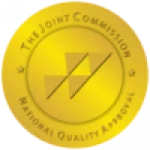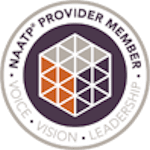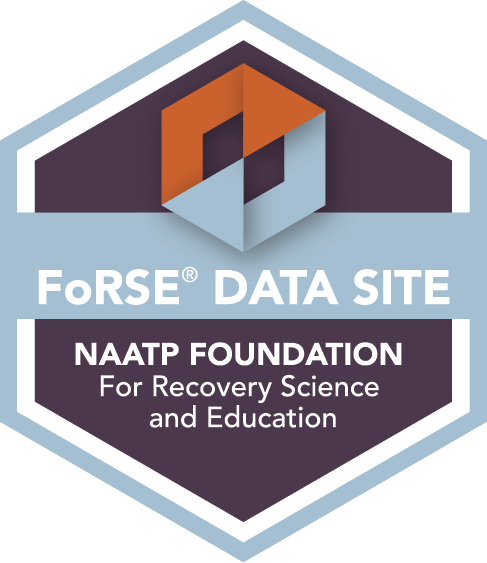At our Illinois addiction treatment center, we see the effects of the opioid addiction crisis every day. From patients struggling to overcome dependence to families searching for hope, we work to support people healing from the effects of addiction.
A newly proposed Illinois bill could change how the state addresses this epidemic by focusing on healthcare and harm reduction instead of punishment. State Representative Lindsey LaPointe (D–Chicago), who introduced the bill, is advocating for a public health approach rather than further criminalization.
“Drug use, misuse, addiction, it is a health issue. It requires a health care approach, and that’s what the research and data show.”
This proposal aligns with what addiction specialists and researchers have long confirmed: recovery is more successful when people are supported with treatment, housing, and medical care rather than incarceration.
The Reality of the Opioid Addiction Crisis in Illinois
Illinois continues to face one of the most severe public health challenges in its history. According to the Illinois Department of Public Health (IDPH), 3,261 opioid overdose deaths occurred in 2022, an increase of over 8% from 2021. Synthetic opioids such as fentanyl are now responsible for the vast majority of those deaths, a 3,341% increase since 2013.
Behind these statistics are families who have lost loved ones, individuals who fear relapse, and communities overwhelmed by grief and frustration. As treatment professionals, we know that numbers like these reflect a crisis that requires empathy, evidence-based policy, and dedication — not stigma.
The legislation introduced by Rep. LaPointe reframes addiction as a public health issue rather than a criminal act. If passed, it could fundamentally transform how Illinois delivers opioid epidemic solutions by promoting harm reduction techniques and equitable access to care.
Key elements of the proposed bill include:
- Decriminalizing opioid addiction: Redefining addiction as a medical condition ensures that individuals are met with healthcare resources, not handcuffs.
- Expanding access to housing: Shelters that receive state funding could no longer exclude people based solely on sobriety, ensuring individuals with opioid use disorder (OUD) have a safe place to stay while working toward recovery.
- Improving treatment availability in correctional settings: Jails and prisons would be required to carry naloxone (an overdose-reversal medication) and offer medications for opioid use disorder, such as methadone or buprenorphine, to incarcerated individuals.
- Strengthening harm reduction infrastructure: The bill supports evidence-based approaches already endorsed by national agencies like the Centers for Disease Control and Prevention (CDC) and the Substance Abuse and Mental Health Services Administration (SAMHSA).
This approach complements Illinois’s State Opioid Action Plan, which prioritizes prevention, treatment, recovery, and harm reduction as key pillars in combating the opioid crisis.
Criminalizing addiction has not reduced overdose rates. Treating substance use in the criminal system with the attitude that it is a moral failure rather than a medical condition isolates individuals who most need help.
By contrast, a health-centered framework emphasizes:
- Early Intervention: Recognizing addiction as a chronic but treatable disease enables earlier screening and referrals to treatment.
- Evidence-Based Treatment: Expanding access to MOUD has been shown to cut overdose deaths by more than half in some populations.
- Social Support: Addressing housing, employment, and mental health needs helps prevent relapse and sustain long-term recovery.
The CDC identifies harm reduction as an essential part of any effective public health response, highlighting the importance of syringe services, naloxone distribution, and overdose education as proven tools to reduce mortality.
At our center, we believe in meeting people where they are. Harm reduction is not about enabling drug use, but focuses on preventing deaths and opening the door to treatment.
Some key harm reduction techniques recognized by public health authorities include:
- Naloxone Distribution: This life-saving medication reverses opioid overdoses and is now available to the public without a prescription in Illinois.
- Medication-Assisted Treatment (MAT): Combining medication with counseling and behavioral therapies increases the chances of sustained recovery.
- Syringe Service Programs (SSPs): SSPs reduce the transmission of infectious diseases like HIV and Hepatitis C and serve as vital entry points to care.
- Education and Outreach: Harm reduction programs provide people with accurate information about safe use, overdose prevention, and available treatment resources.
Illinois’s Department of Public Health has already begun integrating harm reduction into its statewide initiatives, providing grants and resources to organizations working directly with at-risk populations.
How the Bill Could Change Illinois’s Addiction Landscape
If implemented, this legislation could significantly improve outcomes for individuals with opioid use disorder.
Access to stable housing is one of the strongest predictors of recovery. By ensuring that shelters cannot exclude people based on sobriety, the bill promotes stability and dignity, all key ingredients in long-term recovery.
Providing naloxone and MOUD in correctional facilities could dramatically reduce overdose deaths upon release, when individuals’ tolerance is lowest. This strategy is consistent with research from the National Institutes of Health (NIH) and SAMHSA showing that treatment during incarceration reduces relapse and recidivism.
By encouraging harm reduction statewide, Illinois can strengthen connections between hospitals, treatment centers, and community organizations. This helps to create a safety net for those most at risk of relapse or opioid overdose.
The more people have access to naloxone, the fewer lives are lost. Widespread community training and distribution can significantly reduce fatal overdoses, as supported by data from IDPH and the CDC.
Potential Challenges of Opioid Addiction Treatment
As with any major policy shift, implementation will come with obstacles. These include:
- Funding and Staffing: Effective harm reduction programs require sustained funding, medical personnel, and outreach workers.
- Public Perception: Education campaigns are necessary to counter the misconception that harm reduction encourages substance use.
- Rural Access Gaps: Many rural Illinois counties lack addiction treatment and harm reduction services. According to the Southern Illinois University School of Medicine, geographic and economic barriers have worsened overdose risk in these areas.
- Cross-System Coordination: Success requires seamless cooperation among healthcare providers, law enforcement, social services, and local governments.
Despite these challenges, this legislation represents an opportunity to create a unified, compassionate framework for addiction response in Illinois.
The View from Northern Illinois: Healing Through Compassion
Every day, our clinical team meets individuals who have faced stigma, trauma, and isolation because of addiction. Yet we also witness resilience in the people rebuilding their lives with the right treatment, medical care, and community support.
Policies that prioritize compassion and health over punishment mirror what we have seen in our work in addiction recovery: When people are treated with dignity, they are more likely to heal and accept help. By reframing opioid addiction as a chronic medical condition, Illinois lawmakers are aligning state policy with best practices recommended by national health agencies.
What Illinois Residents Can Do to Support Harm Reduction
Everyone has a role in shaping a more compassionate and effective response to the opioid addiction crisis. Even if someone doesn’t know someone dealing with addiction, there are still ways to support the effort against the opioid addiction crisis:
- Carry Naloxone: This medication can reverse an overdose and is now available without a prescription.
- Support Harm Reduction Programs: Volunteer, donate, or advocate for evidence-based community programs.
- Challenge Stigma: Speak openly about addiction as a health issue, not a moral failing.
- Encourage Treatment: Help family members and loved ones find local treatment resources or call Illinois’s Helpline for Opioids and Other Substances (1-833-2FINDHELP).
- Engage with Lawmakers: Advocate for policies that promote treatment solutions to addiction based on science and compassion.
Looking Ahead: A Path Toward Recovery for Illinois
The opioid epidemic is not just a public health issue, but a humanitarian crisis. This new bill, led by Rep. LaPointe, reflects a growing recognition that addiction recovery requires support, stability, and medical care. For many treatment professionals and families, it represents hope for a future where lives are saved, communities are strengthened, and recovery is within reach for all.
If you’re seeking help for addiction for yourself or someone you love, we’re here to help. We’re not here to judge you. We help people of all identities and from all walks of life recover from substance use disorder and co-occurring mental health conditions. Call us today to learn more about how we can help.
https://dph.illinois.gov/topics-services/opioids/idph-data-dashboard.html
https://dph.illinois.gov/topics-services/opioids/il-opioid-action-plan.html
https://www.cdc.gov/overdose-prevention/php/od2a/harm-reduction.html
https://www.siumed.edu/sites/default/files/2021-11/COVID_19_and_the_Rural_Opioid_Epidemic.pdf





